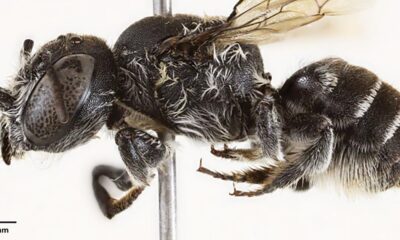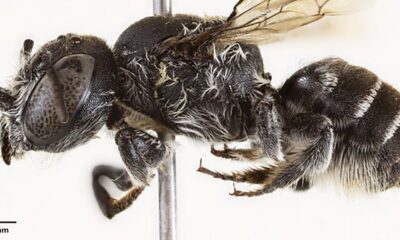Science
Study Reveals Ancient Lead Exposure Shaped Human Evolution

A groundbreaking study led by researchers at Southern Cross University in Australia has revealed that lead exposure significantly influenced the evolution of both Neanderthals and early humans. Contrary to previous beliefs that associate lead poisoning primarily with the industrial era, evidence suggests that our ancestors encountered lead for at least two million years, impacting their brain development and behavior.
The research team utilized advanced techniques, specifically laser ablation mass spectrometry (LA-MS), to analyze ancient teeth from primates and early hominids. They discovered distinct patterns of lead exposure in Neanderthal molars from Payre, France, dating back approximately 250,000 years. This exposure was evident in 73% of all tested primate and hominid fossils across Africa, Asia, and Europe, indicating a widespread and long-standing issue.
As Professor Renaud Joannes-Boyau, co-corresponding author and Head of the Geoarchaeology and Archaeometry Research Group at SCU, noted, “Our data show that lead exposure wasn’t just a product of the Industrial Revolution – it was part of our evolutionary landscape.” The findings suggest that lead, likely from natural sources such as lead-rich soil and volcanic dust, played a role in shaping the social and cognitive abilities of our ancestors.
The study highlights that patterns of lead absorption corresponded with periods of dental growth, confirming that Neanderthals encountered lead while alive, rather than being contaminated post-mortem. Such exposure is particularly concerning given that lead is a well-known neurotoxin in modern humans, associated with cognitive impairments and social behavior challenges.
Researchers linked this ancient exposure to neurological impacts by examining the NOVA1 gene, which is crucial for neuronal function and communication. When lead was introduced to human brain organoids containing a Neanderthal-like version of the NOVA1 gene, it disrupted the FOXP2 gene, essential for language development. Interestingly, the modern human variant of NOVA1 appeared more resilient to lead-induced neuronal stress, suggesting that genetic adaptations may have emerged to mitigate the effects of environmental toxins.
According to Professor Alysson Muotri from the School of Medicine at UC San Diego, “These results suggest that our NOVA1 variant may have offered protection against the harmful neurological effects of lead.” This indicates that environmental pressures, such as lead toxicity, could have driven genetic changes that enhanced survival and communication skills, giving modern humans an advantage over Neanderthals.
Professor Manish Arora from the Icahn School of Medicine at Mount Sinai emphasized the broader implications of this study. He stated, “This study shows how our environmental exposures shaped our evolution.” The research offers a new perspective on environmental medicine, suggesting that toxic exposures could provide survival advantages in the context of inter-species competition.
The findings from this study were published in the journal Science Advances, contributing to a deeper understanding of the evolutionary history of humans and the impact of environmental factors on our development. As researchers continue to explore these connections, the implications for understanding modern health issues related to environmental toxins remain profound.
-

 Technology5 months ago
Technology5 months agoDiscover the Top 10 Calorie Counting Apps of 2025
-

 Health2 months ago
Health2 months agoBella Hadid Shares Health Update After Treatment for Lyme Disease
-

 Health3 months ago
Health3 months agoErin Bates Shares Recovery Update Following Sepsis Complications
-

 Technology4 months ago
Technology4 months agoDiscover How to Reverse Image Search Using ChatGPT Effortlessly
-

 Technology1 month ago
Technology1 month agoDiscover 2025’s Top GPUs for Exceptional 4K Gaming Performance
-

 Technology2 months ago
Technology2 months agoElectric Moto Influencer Surronster Arrested in Tijuana
-

 Technology5 months ago
Technology5 months agoMeta Initiates $60B AI Data Center Expansion, Starting in Ohio
-

 Technology5 months ago
Technology5 months agoRecovering a Suspended TikTok Account: A Step-by-Step Guide
-

 Health4 months ago
Health4 months agoTested: Rab Firewall Mountain Jacket Survives Harsh Conditions
-

 Lifestyle5 months ago
Lifestyle5 months agoBelton Family Reunites After Daughter Survives Hill Country Floods
-

 Technology4 months ago
Technology4 months agoHarmonic Launches AI Chatbot App to Transform Mathematical Reasoning
-

 Technology3 months ago
Technology3 months agoUncovering the Top Five Most Challenging Motorcycles to Ride





















